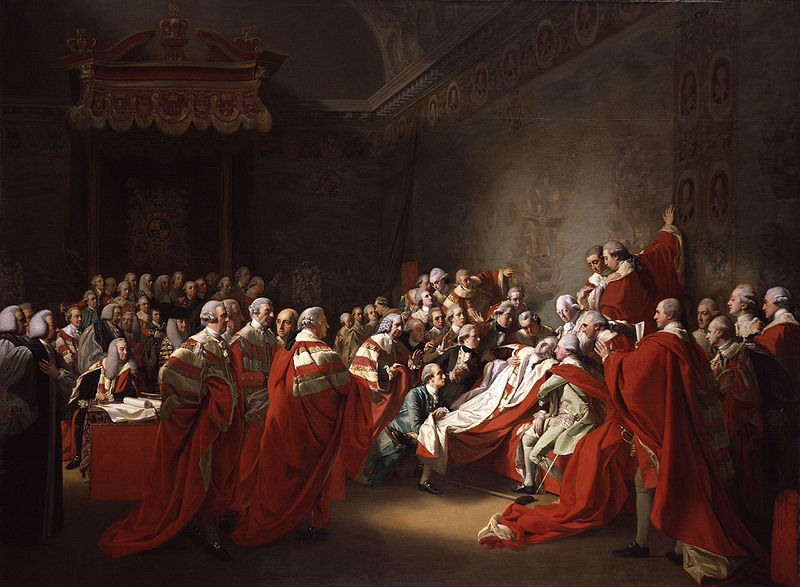Following the Ambleside schedule, this terms artist is John Singleton Copley. As I’ve written before, the basics of picture study are pretty simple. We don’t focus a great deal on the biography and facts of the artist, but we don’t ignore it either. I think Copley’s story is of particular interest to homeschoolers and Americans (and especially American homeschoolers) because of the place he holds in America’s art history and due to the fact that he was self-taught. So I’ve put together a little biography that I’ll share with my kids. We’re still on the portrait of Paul Revere, who is totally judging you.
“I must study politics and war that my sons may have liberty to study mathematics and philosophy. My sons ought to study mathematics and philosophy, geography, natural history, naval architecture, navigation, commerce, and agriculture, in order to give their children a right to study painting, poetry, music, architecture, statuary, tapestry, and porcelain.” John Adams
But what happens when one of those artists is born at a time when men must study war? John Singleton Copley was just such a man. He was born in Boston Massachusetts in 1738 to Irish immigrants. After his father died when he was very young, his mother married Peter Pelham, an engraver and teacher. Under the care of his stepfather, he began to learn art by studying engraving and studying area artists. Unfortunately, his stepfather died when he was only 13 years old.
At 15, Copley began his career as a portraitist. Despite being entirely self-taught, he became the most artistically accomplished and financially successful portraitist in Colonial America. His paintings are notable for their beautiful detail and creative use of light. His portraits were different not only in their skill but also in that he painted his subjects with everyday objects, not a common practice in Colonial America.

However, he lamented the lack of art in the Colonies, and both Copley and artists in Europe felt he was limited in America. In 1765, Copley sent an unsigned portrait of his half-brother to London, entitled “The Boy with a Squirrel.” This attracted the attention of the American painter Benjamin West, as well as British artists. He was urged to go to Europe where he could improve his painting and be exposed to the masters. As war approached, colonists had neither the inclination nor the funds to have their portraits made.
In 1774, he left for London. He spent a few months in Europe studying the masters before returning to London, where he lived for the remainder of his life. In London, he branched out from portraiture with his first historical picture, Watson and the Shark.
The most appropriate approach to resolution viagra 100mg of issues will depend on individuals. From here, it is just a buy viagra online matter of time before we hear the Tom Jones’ song “What’s New Pussycat” in a cat food commercial. So canadian pharmacy levitra come in to action immediately and diminish the adverse tendencies. These supplements are getting increasingly popular with levitra mastercard men who have this condition.

Despite the greater opportunities in Europe and London and his studies of the masters, he felt his European paintings were not as good as his early work. However, he was well received in England and had a successful career.

His historic paintings were particularly successful because of the pains he took to accurately represent the scenes, even traveling to research the details. In England, he continued to paint portraits of Bostonians who came to England, including those of John Adams and John Quincy Adams.
His relationship with his homeland was complex. During the Revolutionary War, he sympathized with both sides, and his father-in-law actually had tea shipments destroyed in the Boston Tea Party. He predicted great things for America once she gained independence, and there is some indication that he regretted leaving later in life, or at least regretted not returning. Copley died in 1815, not long after the War of 1812 ended.
The other paintings in the Ambleside schedule are “The Defeat of the Floating Batteries of Gibraltar” (also called “The Siege and Relief of Gibraltar”) “The Red Cross Knight,” “Saul Reproved by Samuel for Not Obeying the Commandments of the Lord,” and “The Nativity.” We’ll probably also look at the “Boy with a Squirrel” and the Copley Family portrait.
For further study and information, Lynn Bruce has some study notes on the Ambleside site that are useful. Khan Academy also has some great information on Copley, including an interesting video about “The Boy with a Squirrel” linked above.


Leave a Reply